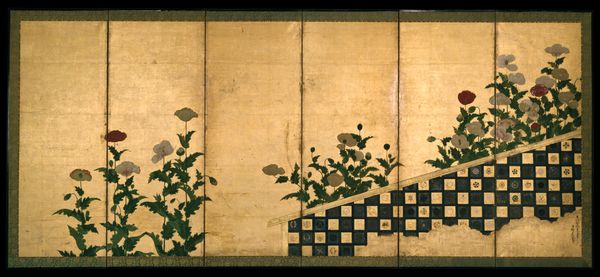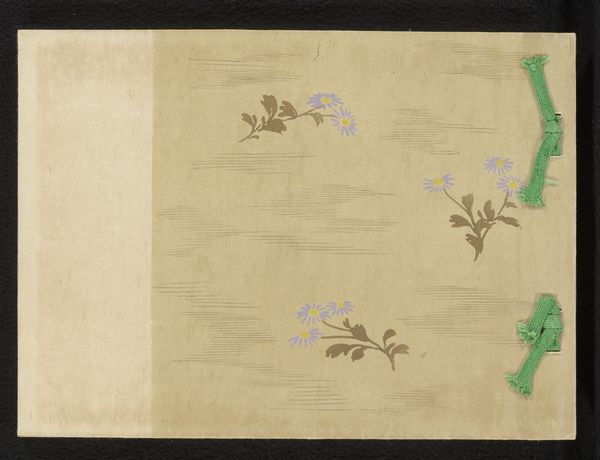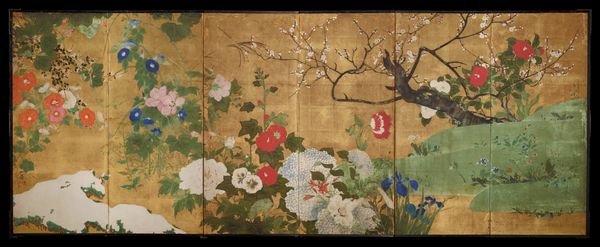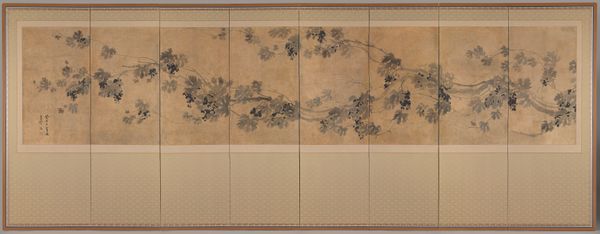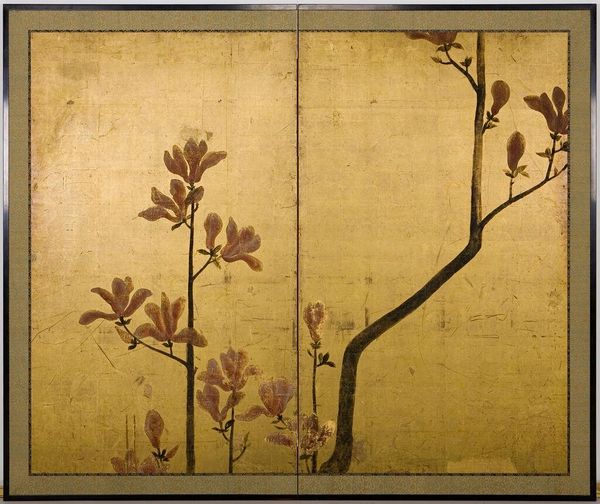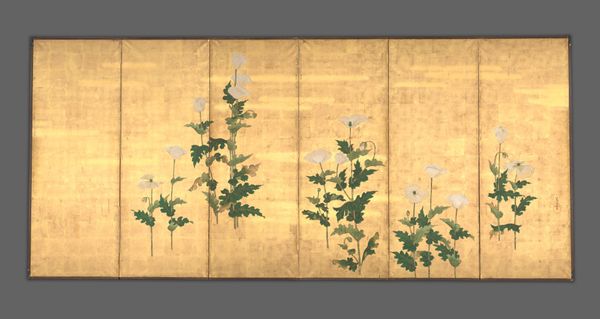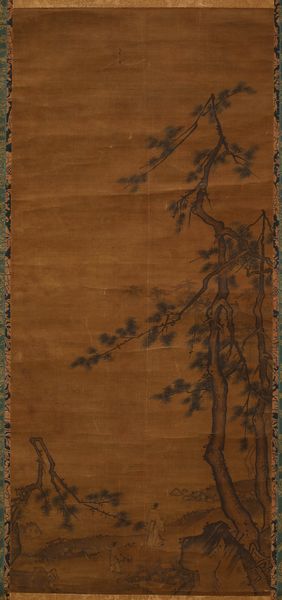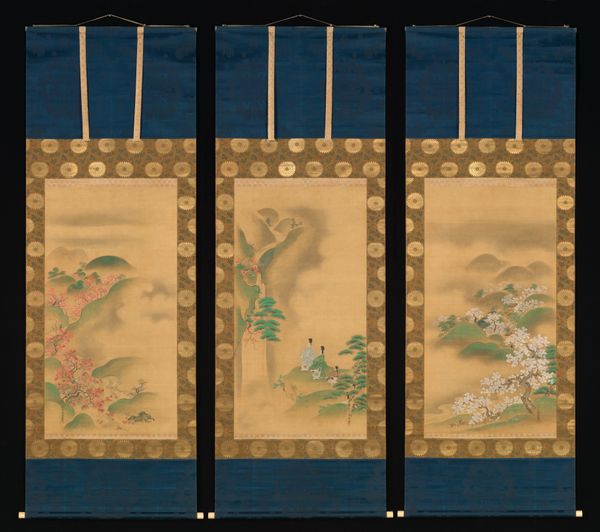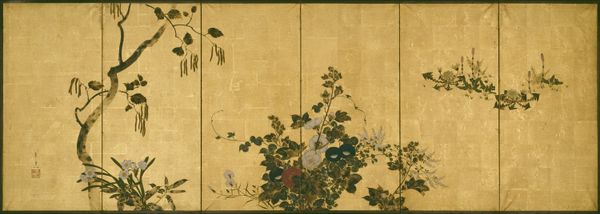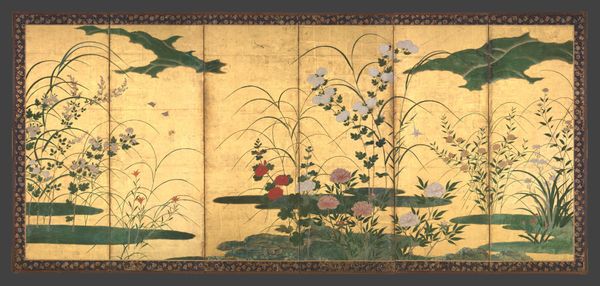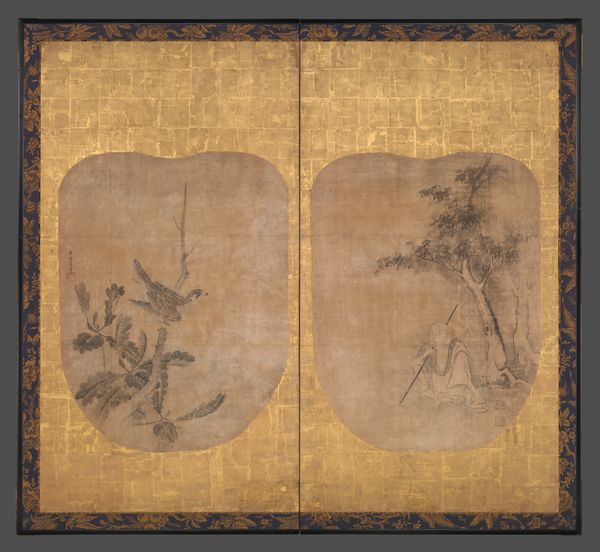
Anthology of Japanese and Chinese Poems (Wakan rōeishū) with Underpainting of Arrowroot Vines 1600 - 1633
0:00
0:00
painting, watercolor
#
water colours
#
painting
#
asian-art
#
ukiyo-e
#
watercolor
#
watercolor
Dimensions: Image: 65 3/4 in. × 12 ft. 4 in. (167 × 375.9 cm)
Copyright: Public Domain
This six-panel screen, found in Japan, was created by Konoe Nobuhiro in the 17th century, using ink, color, gold, and silver on paper. Nobuhiro was a courtier, calligrapher and poet. The work reflects a culture of aesthetic refinement in the Japanese Imperial Court, combined with Zen Buddhism. Note the scattered squares of gold and silver leaf, and trailing arrowroot vines. These provide a visual ground for the calligraphic inscriptions. The poems themselves, taken from the Wakan rōeishū anthology, reflect a range of emotions and observations. This compilation was very popular amongst the court aristocracy to display elite taste and education in both Japanese and Chinese poetic traditions. The screen's visual elements are combined to create a meditative space that would encourage contemplation. The study of court culture, aesthetic practices, and literary traditions helps us understand the social context that shaped this screen. Resources such as historical texts, biographies, and studies of artistic patronage are crucial when we reflect on the meanings that art can hold.
Comments
No comments
Be the first to comment and join the conversation on the ultimate creative platform.
